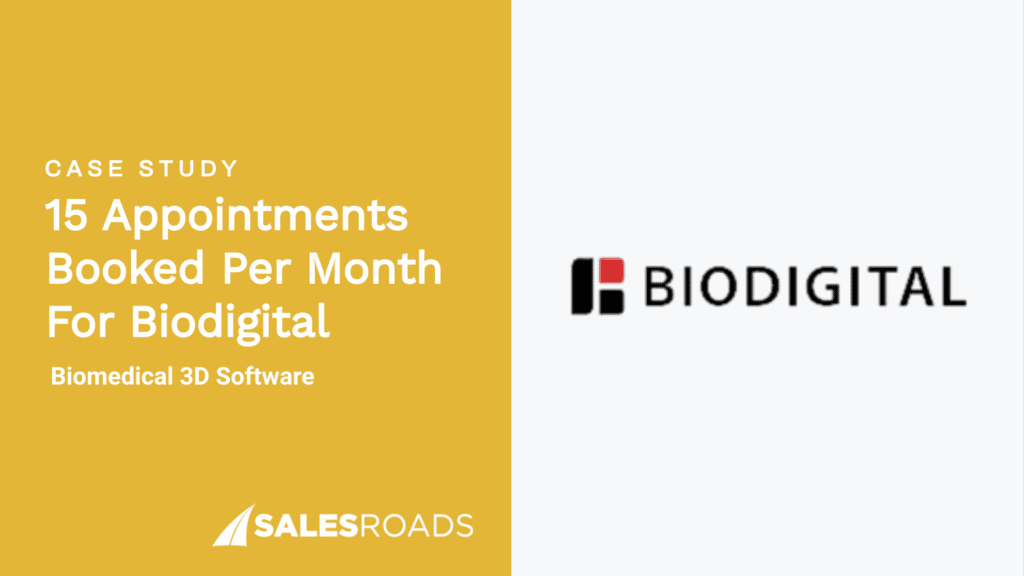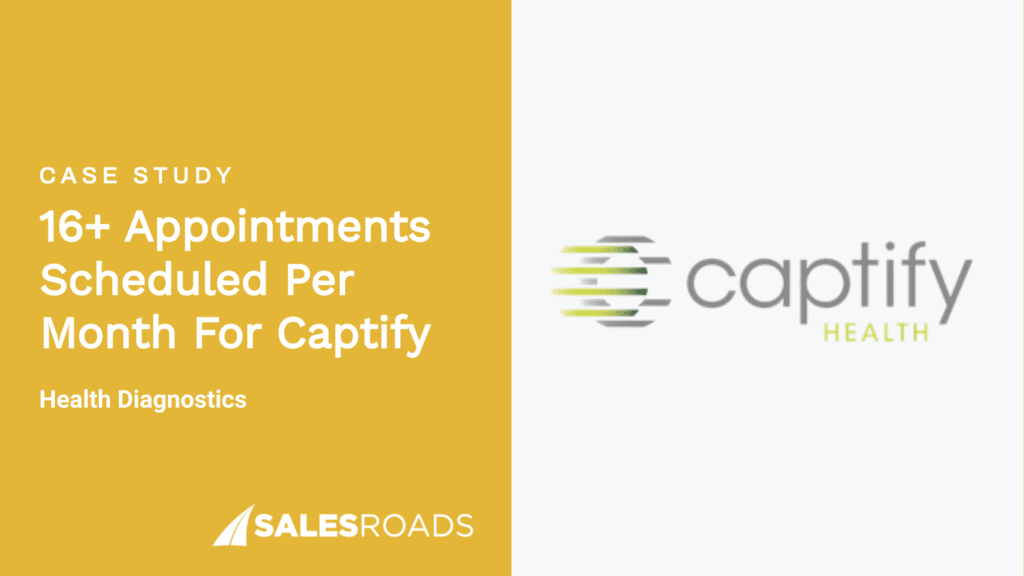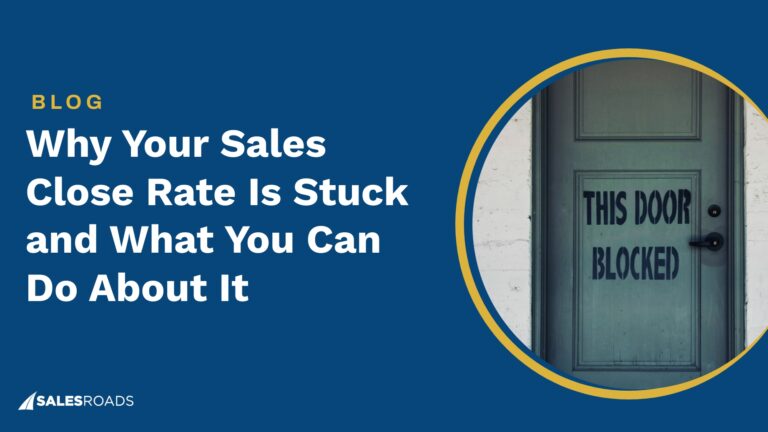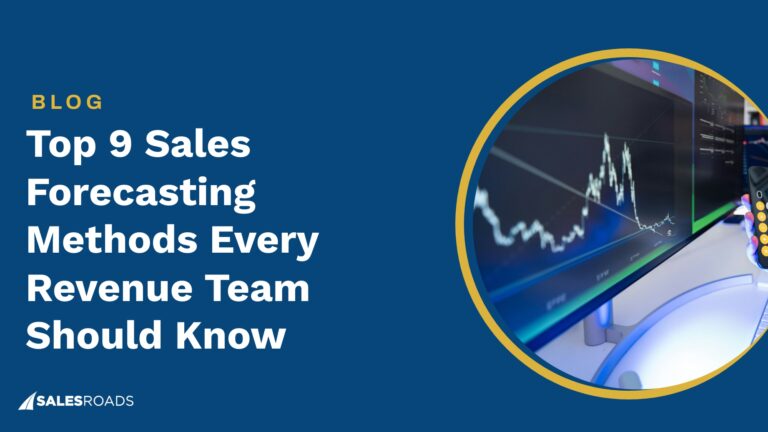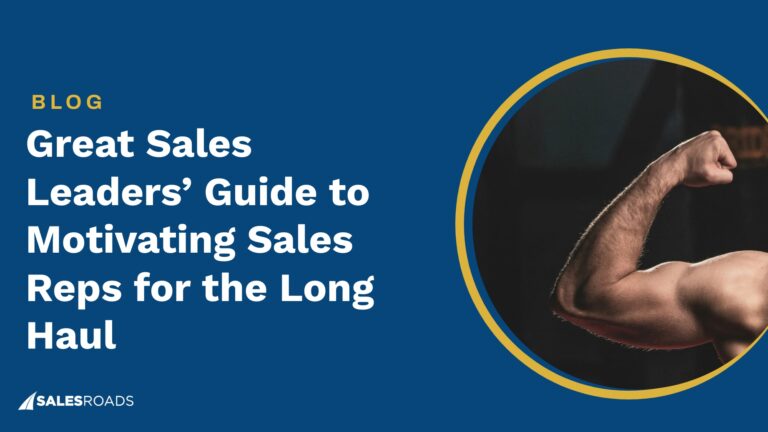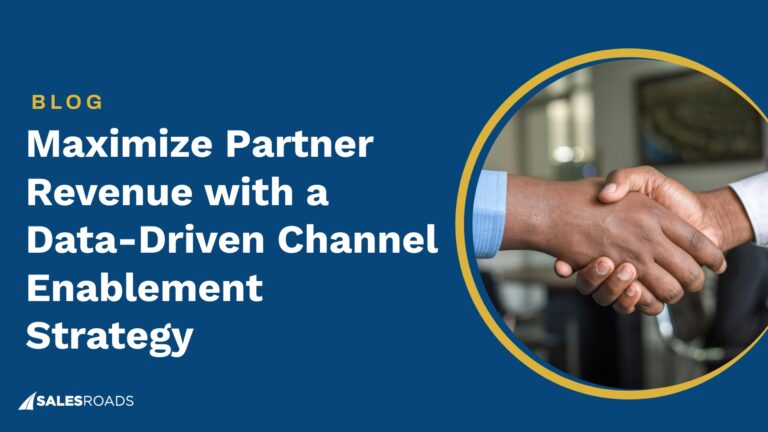Publishing articles but avoiding cold calls. Sending cold emails but skipping social media engagement.
Many companies believe they must choose between inbound or outbound lead generation. However, here’s the hack: you don’t need to limit yourself to just one.
The Critical Role of Lead Generation in Sales
Lead generation is more than just a buzzword; it’s an essential tactic for business growth and the lifeblood of any sales-driven organization. At its core, lead generation entails identifying and cultivating potential customers for your products or services.
Today, effective lead generation strategies are increasingly vital, as they serve as the bridge between your marketing efforts and sales results.
A focused lead generation strategy can help you tailor your messaging to address the specific needs and pain points of your ICP, thereby increasing the likelihood of conversion.
By targeting efforts on leads that are more likely to convert, you can allocate your time, energy, and budget towards nurturing these prospects, optimizing your ROI.
Without a consistent influx of new leads, sales can stagnate, and you may struggle to expand your market share. Effective lead generation, therefore, is not just a task for your sales team; it’s a strategic foundation that can significantly impact your company’s bottom line and its potential for scalability.
Exploring Outbound Lead Generation
Outbound lead generation represents the spearhead of a company’s active sales efforts. The essence of it lies in its initiation — the salesperson makes the first move, often without any prior relationship with the prospect. This method allows you to target specific decision-makers or companies that fit your ICP.
This strategy encompasses methods such as cold calling, cold emailing, and social outreach. It allows sales teams to cut through the noise and place their value proposition directly in front of the decision-makers.
When executed correctly, outbound lead generation can yield impressive results on your revenue.
Enhancing outbound lead generation strategies
Refining outbound lead generation is key to improving effectiveness and efficiency. With the right approach, even the coldest outreaches can warm up potential leads and pave the way for a fruitful sales dialogue.
Best practices in cold call outreach
Personalization: Before making the call, thorough research is essential to personalize the conversation to the prospect’s specific business needs, industry trends, and potential challenges they might be facing.
This not only demonstrates that you value your prospects’ time but also increases the relevance of your solution to their problem.
Active listening: Effective cold calling is as much about listening as it is about speaking. Active listening allows sales reps to pick up on cues for pain points and opportunities.
Engage with the prospect by asking open-ended questions that encourage them to talk about their needs and challenges.
Note-taking: SDRs reach out to multiple decision-makers during the day, which makes it impossible to remember each call in detail. That’s why note-taking is quite fundamental.
Use abbreviations, note which option or extension to use to bypass the long phone menu, and which phone number is dialed.
Opener: A cold call opener is your first impression, a make-or-break moment. It’s about grabbing attention in the first few seconds on the phone.
Use the 26-second approach, ask for permission to continue, and show respect for their time. Remember, it’s not just what you say, it’s the gateway to your pitch.
Objection handling: Cold calling often involves navigating through objections. The key lies in how deeply you can understand the real concern behind each objection.
Listen carefully, acknowledge your prospect’s perspective, and respond with tailored solutions. It’s not about winning an argument but about building a bridge of understanding.
Best practices for crafting compelling cold emails
Personalization: Personalization transforms a cold email into a warm introduction.
Address the recipient by name, reference specific details about their business, or comment on a recent achievement. This approach shows you’re not just sending a generic pitch but reaching out with a tailored message.
Subject line: Your subject line is your first impression. Think of it as the headline of your pitch, inviting them into the story you’re about to tell.
Craft it to catch the eye, using concise language that speaks directly to your recipient’s interests or pain points.
Call-to-action: Every cold email should guide the reader to a clear next step.
Whether it’s setting up a meeting, requesting more information, or directing them to a resource, your CTA should be unmistakable and enticing, making the path forward clear and simple.
A/B testing: Variety is the spice of email campaigns.
Use A/B testing to gauge the effectiveness of different subject lines, content, and CTAs. This method allows you to understand what resonates best with your audience, continually refining your approach for maximum impact.
Best practices for LinkedIn outreach for lead capture
Profile optimization: In LinkedIn outreach, your profile is your digital handshake.
It’s crucial to make it professional and reflective of your expertise. A well-optimized profile, with a clear photo and a concise summary highlighting your unique value, not only builds credibility but also makes a compelling case for why you’re worth connecting with.
Personalized connection requests: Sending a connection request on LinkedIn is just the beginning.
Stand out by personalizing each request. A brief, thoughtful note referencing something specific about the person’s profile or recent activity shows you’re genuinely interested in them, not just in expanding your network.
Offering value: When messaging on LinkedIn, the key is to offer value first.
Whether it’s sharing a relevant article, industry insights, or a helpful resource, providing something useful upfront can turn a cold outreach into a meaningful conversation. It’s about giving before asking, setting the stage for a mutually beneficial relationship.
Nurturing via follow-up: Follow-up is where true relationship building happens in LinkedIn outreach.
If your initial message doesn’t get a response, a respectful and well-timed follow-up can make all the difference. It’s about showing continued interest without being pushy and nurturing the connection with patience and tact.
Why Outsourcing Outbound Lead Generation is More Effective?
Outsourcing can provide several strategic advantages for companies looking to streamline their sales processes and focus on closing deals. Here’s why a growing number of businesses are turning to specialized agencies for their outbound lead generation needs:
Focus on closing
Outsourcing allows your AEs to concentrate on their core tasks — nurturing and closing the deal.
By delegating the time-consuming tasks of prospecting and cold outreach, your AEs can direct their skills and time toward nurturing leads and closing sales, which leads to increased productivity and revenue.
You can watch Amanda Cyr, Achievelt’s government director and team lead, in the interview video below. She was an overwhelmed full-cycle AE before SalesRoads. She shares how focusing solely on closing her deals significantly grew her pipeline:
Access to specialized expertise
Lead generation agencies bring specialized expertise and experience that might be too costly or impractical for some businesses to develop internally.
These agencies have dedicated resources and tools specifically designed for outbound lead generation, along with a deep understanding of different industries and markets.
Cost efficiency
Outsourcing can be more cost-effective than maintaining an in-house team, especially when considering the full costs of employee salaries, benefits, training, and the technology needed for effective lead generation.
By outsourcing, you can convert fixed labor costs into variable costs that align with their lead generation needs and budget.
Continuous iteration
Outbound lead generation is not a set-it-and-forget-it process.
Vendors continuously test and refine their strategies for better results. This iterative process ensures that the tactics employed are always aligned with best practices and the latest market trends.
There’s a vast array of vendors to choose from. While some use a one-size-fits-all approach, others can be considered ‘premium options’ that tailor their sales strategies to meet your specific business needs.
If you don’t know how to evaluate different vendors, watch our webinar where David Kreiger, the President of SalesRoads, presents insightful questions to help identify red flags and avoid partnering with the wrong vendor:
Exploring Inbound Lead Generation
Inbound lead generation has emerged as a powerful strategy to attract and engage potential customers by providing value upfront. Unlike outbound methods that seek out customers, inbound lead generation is about creating compelling content and experiences that pull customers toward the company.
Foundations of inbound lead generation
Inbound lead generation is rooted in establishing trust and rapport with potential customers by providing them with valuable content.
This approach relies heavily on creating informative and engaging content that addresses the needs and questions of your ICP.
SEO plays a vital role in this process, optimizing the content to ensure it ranks well in search engine results and becomes easily discoverable by those looking for related information.
Social media engagement is also crucial for promoting content, interacting with followers, and building a community around the brand.
The cumulative effect of these efforts is a digital presence that attracts potential customers, providing them with the information they need when they’re ready to make a purchase decision.
Crafting a successful inbound strategy
Developing an effective inbound pipeline requires a deep understanding of your ICP and sales funnel. Content creation should be at the heart of this strategy, with a focus on delivering high-quality, relevant, and engaging materials such as blog posts, ebooks, infographics, and videos.
It’s essential to distribute this content across various digital platforms where your decision-makers are active, including social media channels, the company’s website, and email marketing campaigns.
Continuous testing and optimization of all elements — from the content itself to the channels used for distribution — are fundamental to keeping the strategy dynamic and responsive to changing market conditions.
You can refine your content and employ the most effective strategies by leveraging analytics.
Inbound vs. Outbound Lead Generation: A Comparative Study
The pursuit of generating leads has bifurcated into two distinct strategies: inbound and outbound lead generation. Each approach has its methodologies, strategies, and outcomes.
Let’s delve into the nuances of both approaches, dissecting the methods of communication, content formats, levels of engagement, and strategies for targeting prospects:
| Point of Comparison | Inbound Lead Generation | Outbound Lead Generation |
| Communication | One-to-many | One-to-one |
| Content formats | General | Personalized |
| Engagement | Passive | Active |
| Target prospects | Diverse | Specific demographic |
Communication methods
The communication method of inbound lead generation is often ‘one-to-many.’ A single blog post, video, or infographic can attract a vast audience, casting a wide net in the digital ocean.
Outbound lead generation, on the other hand, is characterized by ‘one-to-one’ interactions. Sales reps reach out to potential leads through personalized communication channels like phone calls, emails, or direct messages, creating a direct line of communication with each prospect.
Content formats
Content in inbound lead generation is designed to be general, often addressing common questions or interests within a target market. Formats such as blog posts, ebooks, and infographics are created to provide value through generic content.
Outbound content is more personalized; it’s tailored to the specific needs and pain points of a prospect. This might include personalized email sequences, custom presentations, and detailed proposals, all crafted to meet the unique needs of each lead.
Engagement levels
Inbound lead generation typically involves passive engagement. Prospects discover content organically through search engines, social media, or referrals, and the level of engagement is largely dictated by the prospect’s interest and timeline.
Outbound lead generation is inherently active. Sales teams take the initiative to engage prospects through targeted outreach. This active pursuit is designed to create immediate engagement, often prompting a quicker response cycle from the prospect.
Targeting prospects
Inbound strategies are typically designed to appeal to a diverse audience. The content is created with the intent of attracting anyone who might have an interest or need for your product, allowing you to capture a wide range of potential leads.
Outbound strategies are more targeted, focusing on specific decision-makers who have been identified as more likely to have an interest in your product. This can be based on factors such as industry, job title, company size, or previous interactions with your company.
By understanding the distinct advantages and challenges of each approach, you can tailor your strategies to specific market conditions and business goals.
Combining the wide-reaching power of inbound with the targeted precision of outbound can lead to a comprehensive lead generation strategy that covers all bases, ensuring a steady flow of potential customers into the sales funnel.
Multichannel Approach: Inbound and Outbound Lead Gen for Maximum Impact
The integration of inbound and outbound lead generation strategies presents a harmonious blend that leverages the strengths of each to create a more dynamic and resilient sales pipeline.
By adopting a multichannel approach, you can cater to a wider array of touchpoints, thereby increasing the chances of engaging potential buyers wherever they may be in their journey.
The synergy begins with the data and insights gathered from inbound efforts, such as content engagement and website visits, which can inform and refine outbound tactics.
For instance, a potential lead’s interaction with a particular piece of content could trigger a personalized follow-up email, bridging the gap between inbound content discovery and outbound direct engagement.
Moreover, outbound efforts can be designed to direct leads back to inbound assets: A cold call or direct mail campaign can encourage prospects to visit a landing page with a downloadable resource, engaging them in the inbound ecosystem and leading them down the funnel.
In a multichannel strategy, content should be consistent across all platforms, ensuring that messaging is coherent whether the lead is coming from an organic search, social media, or a direct email.
It’s crucial to maintain alignment between the teams responsible for each approach, as well as the tools used to track and manage leads. Using a CRM system that integrates marketing efforts and sales outreach allows for seamless transitions between inbound and outbound interactions.
The key to a successful synergy is not simply running inbound and outbound campaigns in parallel but creating a dialogue between the two. It’s about allowing the insights from each approach to inform and bolster the other, creating a feedback loop that continuously improves both strategies.
This holistic approach ensures that no opportunity is missed, and every lead is nurtured to its full potential, ultimately leading to a more robust and effective sales pipeline.
Bottom Line
Inbound and outbound lead generation each offer unique touchpoints between your sales team and decision-makers. Rather than concentrating solely on one type of lead generation, it’s beneficial to adopt a multichannel approach. Strategically balance your efforts between direct and indirect channels to guide prospects smoothly through your sales funnel.


